Marie Curie is rightly regarded as not just one of the greatest women who ever lived, but also, one of the most accomplished scientists in history. Her tale is one of sacrifice and suffering for science and of unparalleled dedication to unlocking nature’s secrets.
The life and work of Marie Curie will, for better or worse, forever be tied to one substance — radium. It was Curie, with her husband at her side, that would first isolate this extremely dangerous radioactive element in 1902. The duo synthesized one single gram of radium, which they would use in their work on radioactivity in the following years. The discovery would lead to Curie’s second Nobel Prize, this time in chemistry, in 1911.

In 1921, whilst touring the states, she would be awarded another solitary gram of the element in recognition of her service to science by the women of America. Poignantly, and cruelly ironically, radium would eventually lead Curie to her death in 1934 as a result of pernicious anemia caused by chronic radiation poisoning.
But, Curie’s ties to radium would be so monumental that the relationship would continue after her death. Her daughter, Irène, herself a groundbreaking scientist, and her husband Frédéric Joliot, would use the gram of radium Marie had travelled across the Atlantic to obtain as the bedrock that would earn them their own Nobel in 1935. Irène would also follow in her mother’s footsteps in another, far less enviable way, as radiation poisoning would majorly contribute to her death also.
Beyond Curie herself, those two grams of radium have a storied tale surrounding them, if only elements could speak. The first had to be protected against the ravages of the First World War. Whilst the second would not only be saved from the clutches of the Nazis but was so coveted and valuable that before Frédéric married Irène, Marie made her daughter’s suiter sign a prenuptial agreement forfeiting all rights to the radium should they separate.
The Early Days of Radioactivity
“I was taught that the way of progress was neither swift nor easy.”
Marie Curie.
‘Radioactive’ is a word we take for granted today. It’s well known outside journals and the halls of academia, capturing the attention of the general public from the 1950s onwards thanks to lurid sci-fi tales, and radioactive spider-bites granting teenagers amazing powers.
Yet unlike many other words in common parlance, the first published use of ‘radioactive’ has not been lost to time, it is preserved and still relevant today. That first usage was in the title of Marie and Pierre’s July 1898 paper: ‘On a New Radioactive Substance, Contained in Pitchblende.’
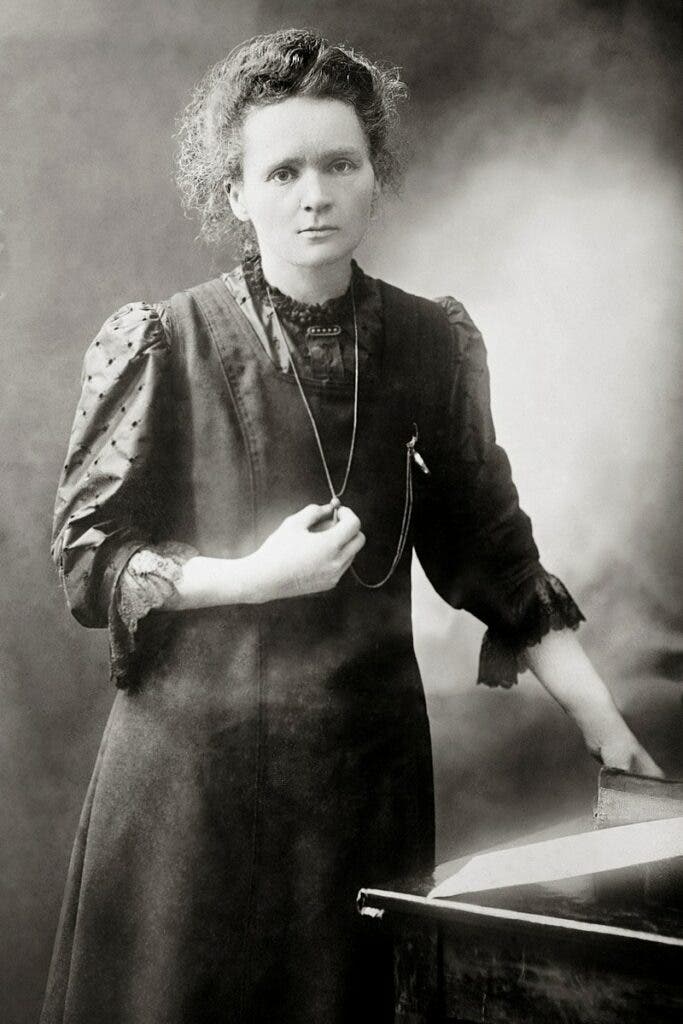
The story of Curie’s exposure to radium and radiation doesn’t begin with her, but with another great scientist, Henri Becquerel. In 1895, whilst intending to study the fluorescent properties of substances such as uranium salts, the French physicist had noticed that uranium blackened photographic plates wrapped in black paper and sealed in a drawer before they had been exposed to sunlight. What Becquerel had discovered was the spontaneous radioactivity of uranium.
In the same year that Becquerel was making his finding, Marie married her first husband Pierre, who would come to share in many of her accolades. Marie, born Maria Salomee Sklodowska on November 7th, 1867 in Warsaw, Poland, had first met Pierre Curie after moving to France, studying at the Sorbonne and acquiring a position studying magnetism. In order to conduct this research, she would need a lab.
Pierre Curie was a teacher and the head of the laboratory in which Marie found herself, he was also already fairly well-known for his work with magnets. As Marie studied towards a mathematics degree, simultaneously conducting experiments with steel in the lab, Pierre attempted to woo her, at one point attempting to win her affections with an autographed copy of one of his studies.
After a brief sojourn back to her country of origin, Marie agreed to marry Pierre in July of 1895. She attended the ceremony in a dark blue suit so that she could return to the lab and resume work after the wedding.

A year later, the couple celebrated the birth of their first child Irène. It was in this same year, 1896, that Marie would become fascinated with the work of Becquerel. Many researchers and scientists had pretty much ignored Becquerel’s uranium finding, but Marie saw further than they did. She decided that his ‘uranium rays’ would make an excellent subject of study for her doctorate.
The First Gram: Polonium and Radium are isolated
“All my life through, the new sights of nature made me rejoice like a child.”
Marie Curie.
Pitchblende, or ‘bad luck rock’ from the German origin of the name, was the substance that Martin Klaproth, a pharmacist from Berlin, first used to extract and isolate a new element in 1789. This element, uranium, would soon also be joined by polonium — named by Marie for her home country — when the Curies isolated it from pitchblende in 1898.
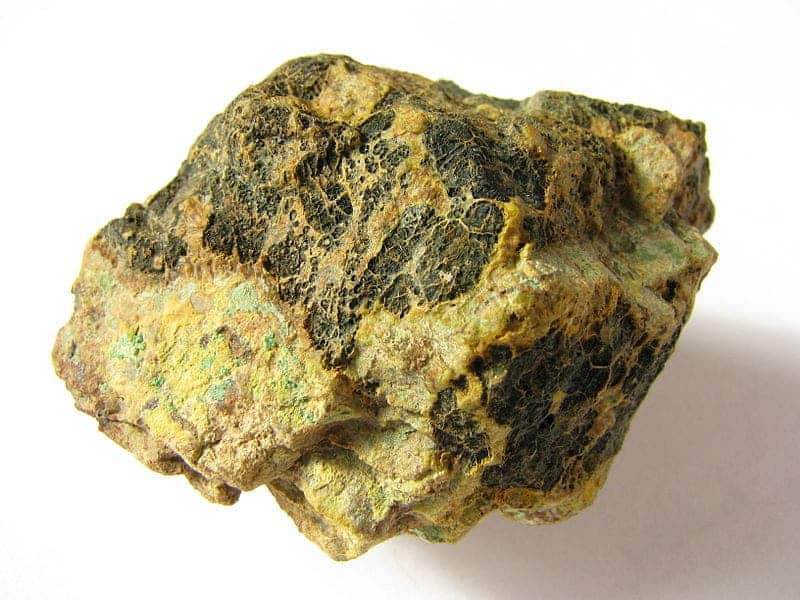
The Curies had examined pitchblende detecting extra radiation that could not be accounted for by considering uranium alone. Marie herself was determined to discover the source of this extra radiation.
The identification of polonium, described in the paper mentioned above, was something of a first in science, marking the first time that an element had been discovered solely as a result of the rays it emitted. It was also the first material to be officially described as radioactive.
By the point that she discovered that pitchblende contained another element that could be isolated, Curie had checked the periodic table as it existed at the time, finding that thorium also produced rays in a similar way to uranium.
By December in the same year, Marie was certain she and her husband had isolated another element in pitchblende, one even more radioactive than polonium. She had discovered radium. But if the Curies were to sway the scientific community about the existence of these two new elements, they would have to isolate a pure enough sample of both to establish that both had unique atomic numbers — the number of protons in an atom — a count that is unique to every element.
After obtaining large amounts of pitchblende from a mine in Austria, the Curies set about isolating pure enough radium to identify its atomic number. The process took years and required strenuous physical labour, with Marie having to melt pitchblende and stir it with a metal rod that she described as being larger than she was. During this period, Marie also produced several papers, worked to complete her doctoral degree, taught at a teacher’s college in Sevres, and raised her daughter, Irène.
To give a hint at just how difficult and excruciating the work of isolating the first gram of radium was, consider that the second gram Marie would work with took a team of scientists 500 tonnes of ore, the same amount of acid, over a 1,000 tonnes of coal and 10,000 tonnes of water to extract. Marie and Pierre did themselves. By hand.
Finally, in July of 1902, Marie’s dedication and hard work would pay dividends. She was finally able to determine the atomic weight of radium, identifying it as possessing 88 protons, marking it out from any other elements.
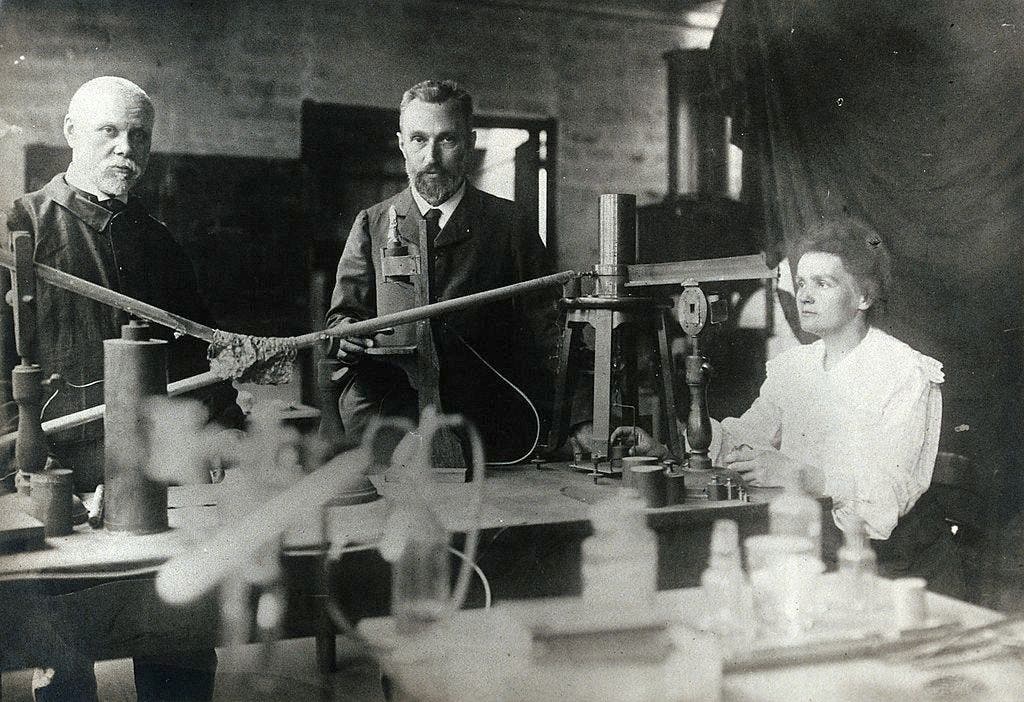
If anyone was in doubt of Marie’s dedication and love for the field of science and the pure pursuit of knowledge, then the action she took upon the identification of radium should be the deciding factor. Had Marie and Pierre claimed the rights to the process of purifying radium, they would have become very rich indeed.
Instead, the Curies rebuffed ideas of personal wealth and shared their process with the wider scientific community. But still, accolades and recognition awaited the pair.
Unfortunately, so did tragedy and hardship.
Accolades and Tragedy
“Be less curious about people and more curious about ideas.”
Marie Curie
By 1903 Marie had become the first woman in Europe to receive a doctorate, and she and her husband’s reputations and fame had begun to grow exponentially. But, this increase in notoriety was inversely proportional to their mutual decrease in health.
From the symptoms displayed by the couple at the time, it would now be easy to diagnose severe radiation exposure. Marie, in particular, was suffering from the effects of her work. In addition to the constant state of exhaustion and burnt fingers and hands, shared by Pierre, Marie had suffered a miscarriage and was rapidly losing weight.
Ironically, at the time, radium was being widely touted for its health benefits, it even found its way into cosmetics. It had also already been selected as a cancer treatment showing great potential in curtailing the growth of cancer cells.
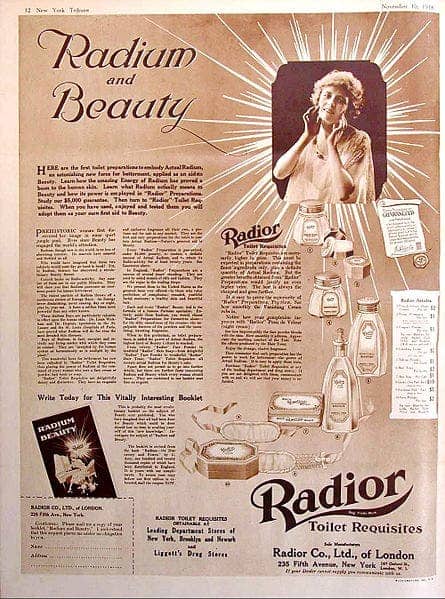
Marie’s ill health prevented her from travelling to Sweden in 1905 to speak on her 1903 Nobel Prize in physics, which she and Pierre shared with Becquerel.
Yet, despite deteriorating health the three year period between 1903 and 1906 was a happy one, both professionally and personally for the Curies. Pierre would be awarded the Humprey Davy Medal in chemistry in 1903 in addition to his joint Nobel. The substantial monetary award associated with the Nobel prize allowed the Curies to not only continue their research but also, to upgrade their laboratory and equipment.
Thus, the Curies were established as leaders in the field of chemistry, and in radioactivity, of course.
In 1904, the same year as Pierre was made a professor at the Sorbonne and Marie his paid assistant, reflective of the poor treatment of women in science at the time, she gave birth to their second daughter Eve.
Two years later, tragedy would rear its ugly head in the lives of the Curies, taking with it Pierre. As he crossed the streets of a rain-soaked Paris, a tired and ill Pierre slipped and fell under the wheels of a horse-drawn carriage. The scientist was killed instantly.
A devasted Marie continued her work without her husband, accepting his position at the Sorbonne. She began her first lecture shortly after his death in a crowded lecture hall, stood within steps of where her husband had very recently delivered his last.
Pure Radium
A scientist in his laboratory is not a mere technician: he is also a child confronting natural phenomena that impress him as though they were fairy tales.
Marie Curie
In 1909, Marie achieved something that Pierre, her late husband, had dreamed of, when plans were drafted to establish the Radium Institute in Paris. Here Marie would oversee her own lab, the Curie Pavillion, a fact that was no doubt bittersweet for the scientist, as her husband had never lived to see it.

The Radium Institute would be completed in 1914, whilst Marie helping considerably in the war effort supplying x-ray equipment for locating shrapnel and bullets in the broken bodies of troops returning from the front. Marie also showed incredible bravery during the First World War, opting to stay in Paris to protect the gram of radium that she and her husband had extracted from tonnes of pitchblende.
Over this period, Marie continued to synthesise purer and purer radium and polonium, driven on in no small part by the scepticism of some of her fellow scientists, such as Lord Kelvin, who still believed these were not elements in their own right. By 1910 she had produced a bright white metal with a melting point of 700⁰C — pure radium.
Her professional achievements continued with the publication of work ‘Treatise on Radiation’ published in 1910, and the award of her second Nobel Prize, this time in chemistry awarded in 1911. The same year she was rejected for membership to the French Academy of Sciences. This rebuttal very likely came because of the fact she was a woman, as no one could doubt the pedigree of her work.
Also in 1911, the need for a unit of measurement to describe radiation was determined by an international group of scientists. The Radiology Congress honoured the Curies by naming this unit the ‘Curie,’ but Marie would not simply accept the honour passively. She herself would set about the difficult task of calculating the value of the ‘curie unit (Ci).’
The unit was equivalent to the radiative activity of one gram of radium per second. Unfortunately, as experiments into radioactivity progressed the value of the curie, 3.7 × 10¹⁰ radioactive decays per second., was too large for precise work. It was eventually replaced by the Becquerel (Bq) as the standard unit for radioactivity.
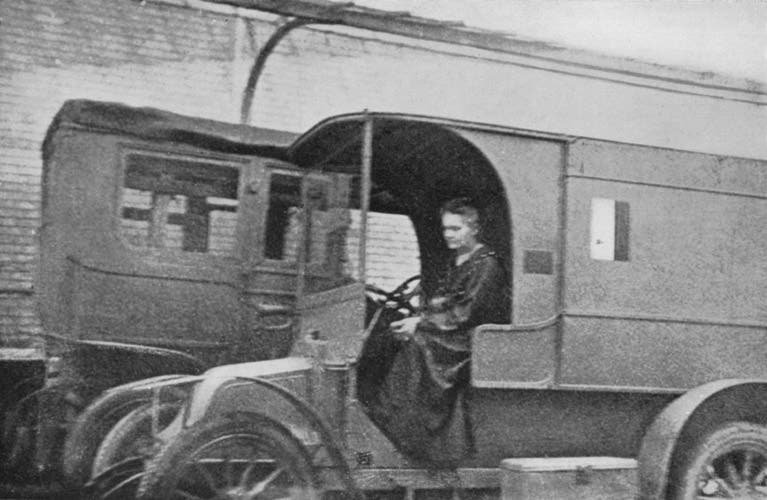
By the 1920s the dangers of contact with radioactive materials were finally being realised by the scientific community at large. Researchers were using increasingly stringent safety precautions. But it was too late for Marie.
The damage to Curie’s health had been done. Yet her dedication to her studies, institute and science en masse would take her across the Atlantic on a strenuous speaking tour of the US. For Marie though, the reward wasn’t fame or recognition.
The reward was another gram of radium.
The Second Gram: Curie’s Sacrifice for Science
“Life is not easy for any of us. But, what of that? We must have perseverance and above all confidence in ourselves.”
Marie Curie.
Marie Curie must have created quite an impression on American journalist Marie Maloney when they met in 1920. By this point, her hands were permanently bandaged. She was near deaf and her vision was afflicted by severe cataracts for which she would need a series of operations to keep at bay.
Curie’s perception in the public’s eye was similarly afflicted. Scandal had surrounded her friendship with physicist Paul Langevin after he left his wife. The newspapers had dogged Marie and the negative attention had had a further detrimental effect on her health.

Maloney was determined to restore Curie’s public image, and despite the scientist’s mistrust of journalists in general, the two quickly struck up a friendship. This relationship got off to a notably spikey start. Moloney had already been nervous to interview Curie, and it was only shortly after the process began that the scientist became interrogator questioning the journalist on her knowledge of radium.
The article Maloney produced for the Delineator hailed Marie Curie as the ‘greatest woman in the world’ and a brilliant scientist. But it was a piece of information that Curie had given Maloney during the interview that reshaped the two women’s lives.
Maloney was already shocked by the virtually impoverished conditions of Curie’s lab compared to the setups of other scientists the journalist had interviewed such as Edison and Bell, when the scientist informed her about the prohibitive cost of radium. At the time a single gram of the element cost an incredible $100,000 or more. Adjusted for inflation, that’s about $1.3 million dollars today.
Maloney was outraged, and rightfully so. It wasn’t right that this great scientist was denied the resources she desperately needed to conduct her work, whilst her male counterparts seemed well provided for.
The journalist began a drive across the United States, which had just given women the right to vote, to raise funds to enable Curie to continue her work less constricted by petty financial concerns.
The Radium Drive, as it would become to be known, was even more of a success than Maloney expected, raising a staggering $156,413 — $2 million today. Not only was Maloney able to acquire the radium for Curie, but she could use the rest of the money to set Marie and her daughters up with a trust fund.
In return for the generosity, Maloney requested that Curie tour the States and speak to American women. Despite ill-health and being a naturally retiring person, in 1921, Curie agreed. The draw of radium was just too tempting.
It was only a short time after her arrival in the US with daughters Irène and Ève that the press and public began to notice the strain on Curie. The scientist hated to be seen as vulnerable, to conceal what she saw as a weakness she had kept her many cataract operations secret, but her ill health could not be denied.
It was at the White House that President Warren Harding presented Marie with the one gram of radium in a 130-pound lead-lined case that opened with a suitably auspicious gold key. Or that was what the press was lead to believe. The radium was actually stored securely at a local government scientific facility.
On July 2nd, Curie returned to Paris. Her arrival home could not have been more in contrast to her arrival in the US via New York. In Paris, there were no brass bands, crowds of well-wishers, girl scout troops to greet her here.
For Marie, there was something much more important here than pomp and circumstance, however. This was where her work was.
After Marie
“Nothing in life is to be feared, it is only to be understood. Now is the time to understand more, so that we may fear less.”
Marie Curie.
The gram of radium that Curie collected, which had been extracted for her by scientists at the Standard Chemical Company, near Pittsburgh, would form the bedrock of Curie’s work until 1934 and her death as a result of complications arising from severe radiation exposure.

Just the year after her death the same gram of radium would lead Irène and Frédéric to a Nobel Prize in Chemistry in 1935 for their discovery that stable atoms could be encouraged to become radioactive. An important step in nuclear chain reactions.
Irène would follow her mother’s footsteps in another way, displaying remarkable bravery to protect the radium when Nazi troops invaded Paris in 1940. She and her husband, who Marie had forced to sign a prenuptial agreement to waive rights to the element should his marriage to her daughter falter, fled west with the radium to Bordeaux.
And the trust fund that Maloney had provided for Curie and her girls would be a life-saving asset to Irène and her own daughters in 1944 when Marie’s eldest used it to flee to Switzerland. Sadly, Marie Maloney would never get the satisfaction of knowing that her devotion to Marie Curie had saved her daughter and granddaughter from war-torn Franca, as the firebrand journalist had passed away from pneumonia just the year previous to their daring escape.
Marie Curie’s life was one of great irony, she risked it many times over for the substance that eventually ended it. But, Curie’s sacrifice, the hardship she worked through, her struggle with grief, physical pain, illness and war, wasn’t really for radium. Nothing so mundane.
It was for knowledge itself and for the betterment of humankind.
I am one of those who think like Nobel, that humanity will draw more good than evil from new discoveries.
Marie Curie.